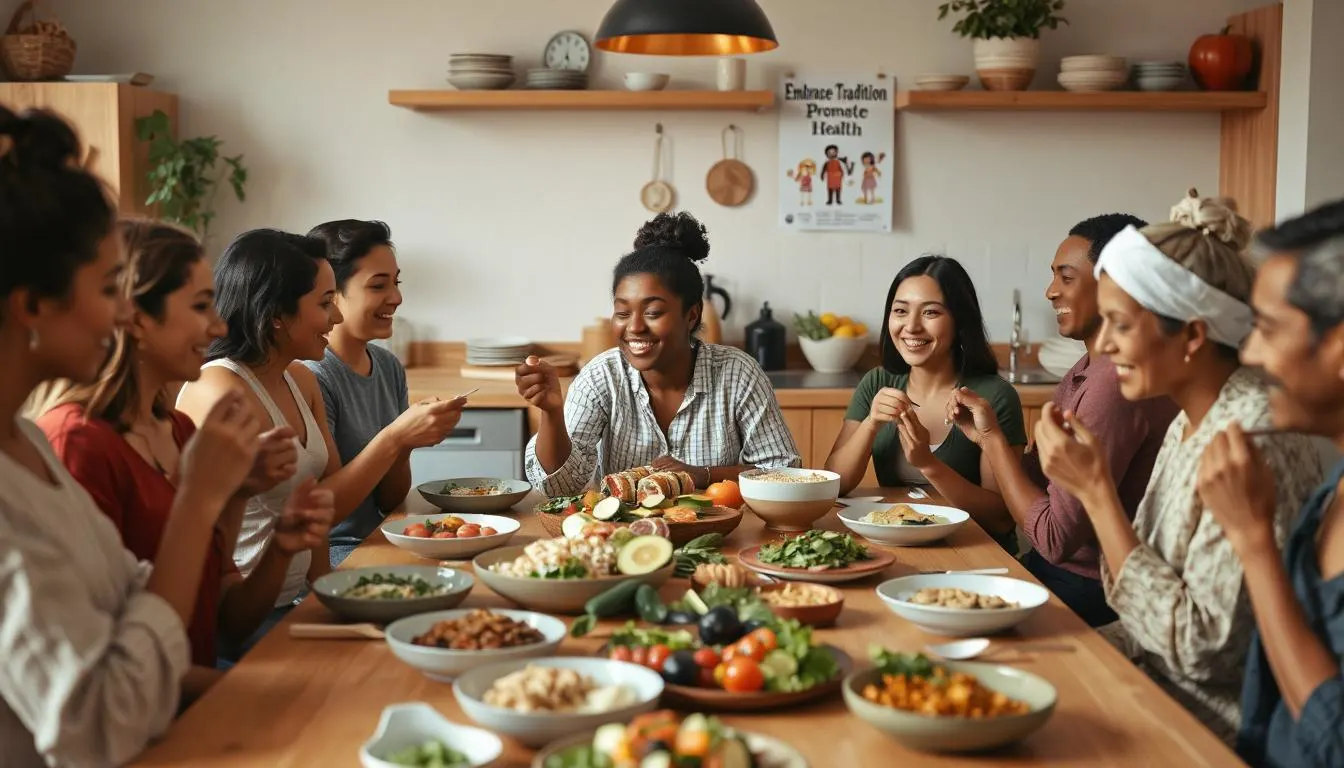Hey there! Have you ever stopped to think about how culture influences our eating habits and weight? Well, let’s dive into it! Cultural influences on obesity play a significant role in shaping our relationship with food and our bodies. From traditional diets to societal beliefs, our cultural background can have a big impact on our health. Understanding how cultural factors contribute to obesity can help us make more informed choices about our diet and lifestyle. So, let’s explore this fascinating topic together and learn how we can navigate cultural influences to lead a healthier life. Get ready to uncover the connections between culture and obesity, and discover ways to make positive changes for your well-being. Let’s embark on this journey together!
Oh, the delicious flavors of traditional diets! These time-honored culinary customs have been passed down through generations, offering a rich tapestry of cultural heritage. But did you know that they also play a significant role in obesity rates?
- Diverse traditional diets: Embracing a variety of fruits, vegetables, whole grains, and lean proteins can help maintain a healthy weight.
- Balanced meals: Traditional diets often emphasize balance and moderation, key factors in preventing obesity.
- Portion control: Many traditional diets incorporate portion control practices, helping to prevent overeating.
By incorporating elements of traditional diets into your own meal planning, you can not only enjoy delicious dishes but also promote a healthier lifestyle. Remember, it’s not just about what you eat, but also how you eat it that can make a difference in your weight management journey.
Cultural Beliefs and Practices Surrounding Food and Body Image
Have you ever thought about how your cultural background might influence your relationship with food and body image? From family traditions to societal norms, cultural beliefs play a significant role in shaping our attitudes towards eating and body image.
- Embrace your cultural heritage when it comes to food – traditional dishes can be not only delicious but also nutritious!
- Avoid falling into the trap of diet culture – remember that beauty comes in all shapes and sizes.
- Listen to your body’s cues and eat mindfully, respecting your hunger and fullness signals.
By understanding how cultural beliefs and practices impact our eating habits and body image, we can make more informed choices that support our overall well-being. Remember, it’s important to celebrate diversity and embrace a positive relationship with food and your body.
Socioeconomic Factors and Cultural Influences on Obesity
Hey there! Let’s chat about how our culture and our wallets can impact our waistlines. Socioeconomic factors play a big role in shaping our eating habits and physical activity levels. For example, limited access to affordable, healthy foods in certain communities can lead to a reliance on cheaper, processed options that are high in calories and low in nutrients.
Cultural influences can also affect our relationship with food and body image. Family traditions, social norms, and even advertising can shape our attitudes towards eating and physical appearance. It’s important to be aware of these influences and make conscious choices that align with our health goals.
Remember, no matter your background or financial situation, prioritizing nutritious foods and staying active are key to maintaining a healthy weight. Don’t let socioeconomic or cultural factors hold you back from living your best, healthiest life!
Media and Cultural Influences on Body Image and Eating Behaviors
Hey there! Have you ever noticed how the media plays a big role in shaping how we view our bodies and our eating habits? From airbrushed models to diet trends, it’s hard to escape the messages that tell us what we should look like and how we should eat.
It’s important to be aware of these influences and to remember that not everything we see in the media is realistic or healthy. Remember, everyone’s body is different and there is no one-size-fits-all approach to health and wellness.
Try to surround yourself with positive influences that promote body positivity and healthy eating habits. Follow accounts that celebrate all body types and focus on nourishing your body with nutritious foods that make you feel good inside and out.
By being mindful of the messages we consume, we can better navigate the cultural influences that impact our body image and eating behaviors. Stay true to yourself and prioritize your health above all else!
Globalization and the Spread of Western Diets
Hey there! Let’s talk about how globalization has impacted our food choices. With the rise of Western diets being spread across the globe, traditional eating habits are being replaced by fast food and processed snacks. This shift towards unhealthy eating can contribute to rising obesity rates in many countries.
So, what can we do about it? One tip is to stay connected to your cultural roots by enjoying traditional dishes and cooking methods. By embracing your heritage, you can maintain a healthy relationship with food while honoring your cultural identity.
Remember, it’s all about balance! Incorporating a mix of traditional and modern foods in your diet can help you stay healthy and happy. Don’t let globalization steer you away from your cultural heritage – embrace it and savor the flavors of your unique traditions!
Strategies for Addressing Cultural Influences on Obesity
Hey there! So, we’ve talked about how cultural influences play a big role in obesity rates. Now, let’s focus on some strategies to tackle this issue head-on.
- Educational Programs: Creating programs that educate communities about the importance of nutrition and physical activity can help change cultural norms surrounding food and body image.
- Cultural Sensitivity: It’s crucial to understand and respect cultural beliefs and practices when developing interventions to address obesity. Tailoring programs to specific cultural contexts can improve their effectiveness.
- Community Engagement: Involving community members in the planning and implementation of obesity prevention initiatives can increase buy-in and sustainability of these programs.
- Access to Healthy Foods: Ensuring that all communities have access to affordable, nutritious foods is essential in combating obesity. This includes promoting local and traditional foods that are healthy.
By incorporating these strategies into our efforts to address cultural influences on obesity, we can make a positive impact on the health and well-being of individuals and communities worldwide. Let’s work together to create a healthier future!


